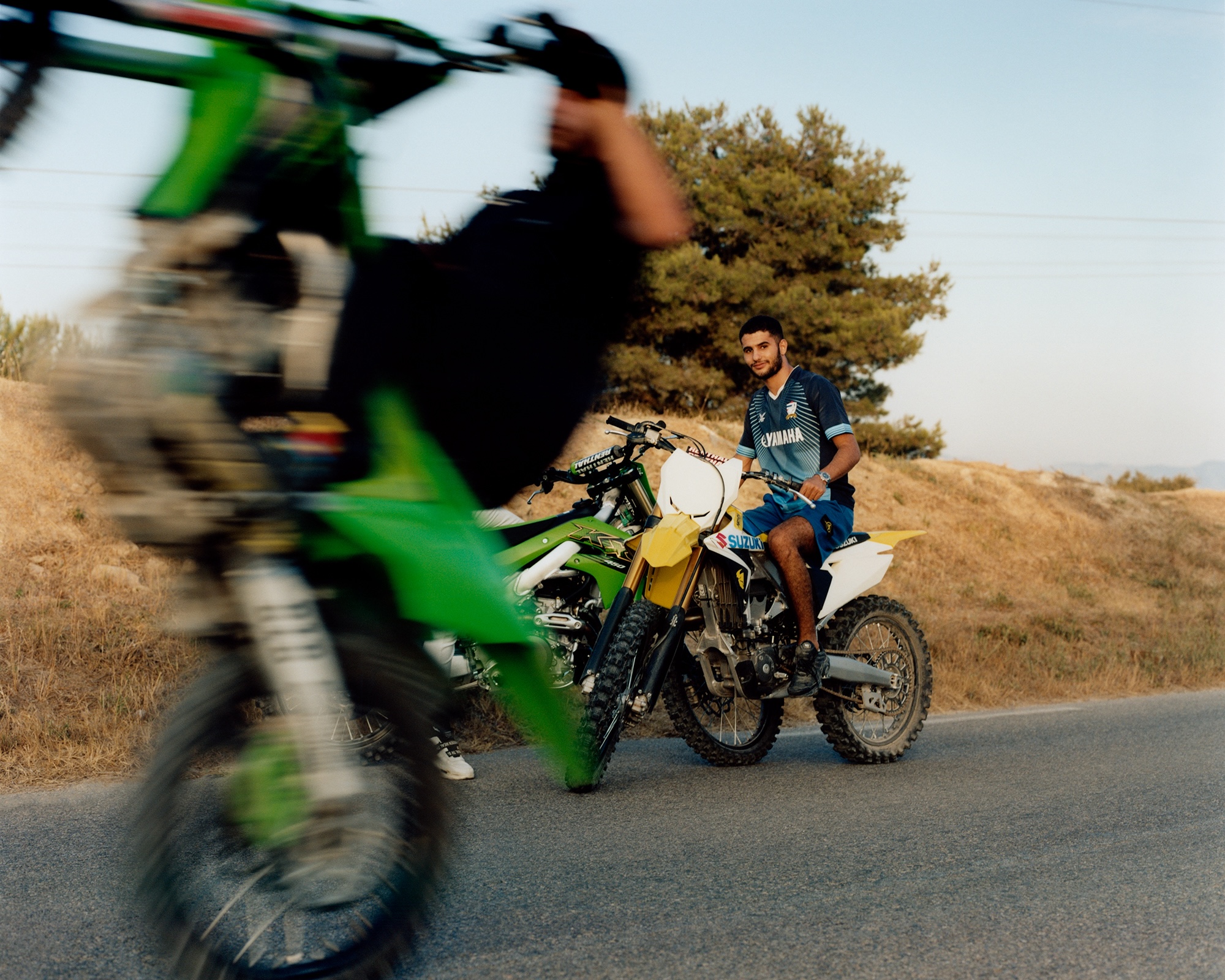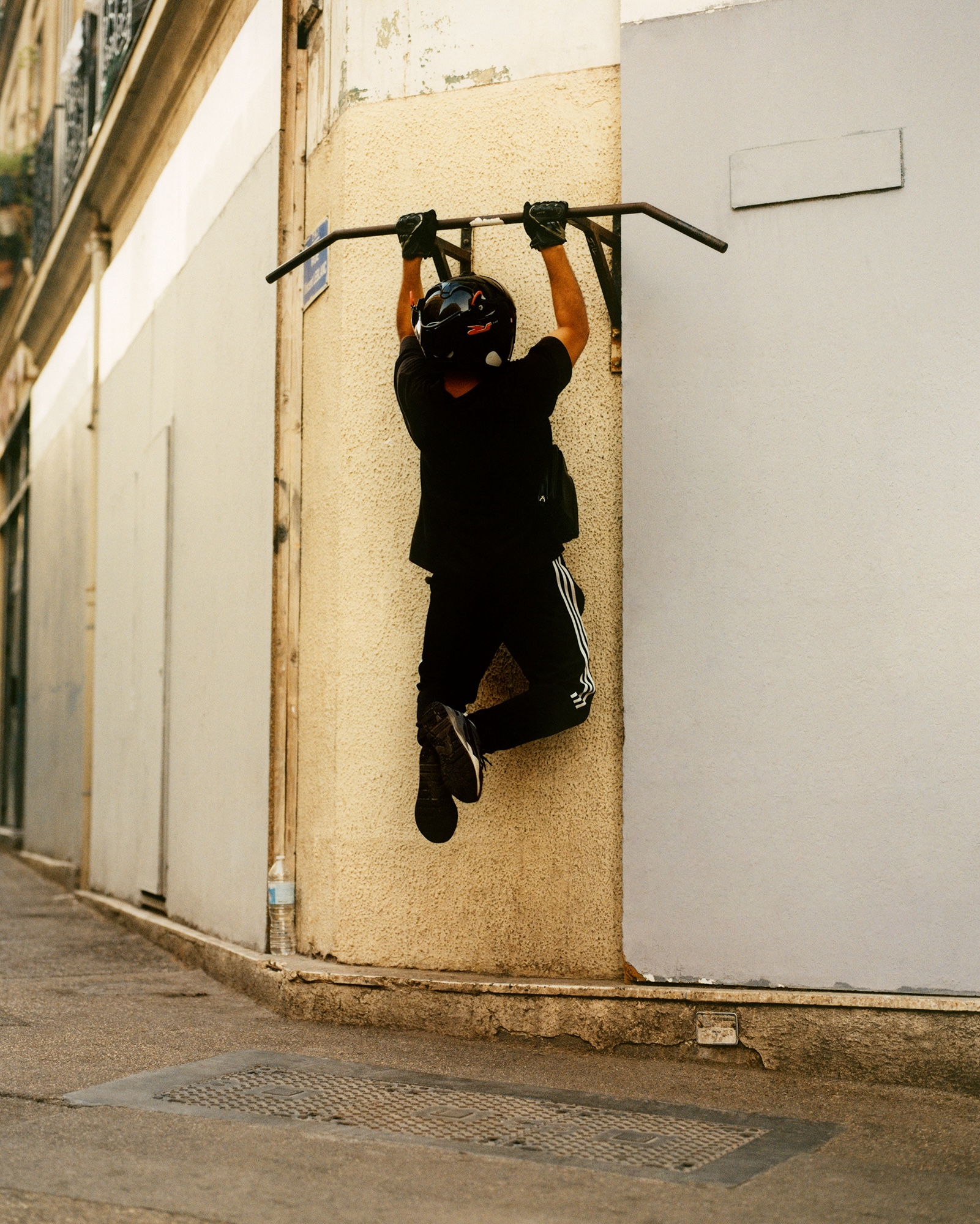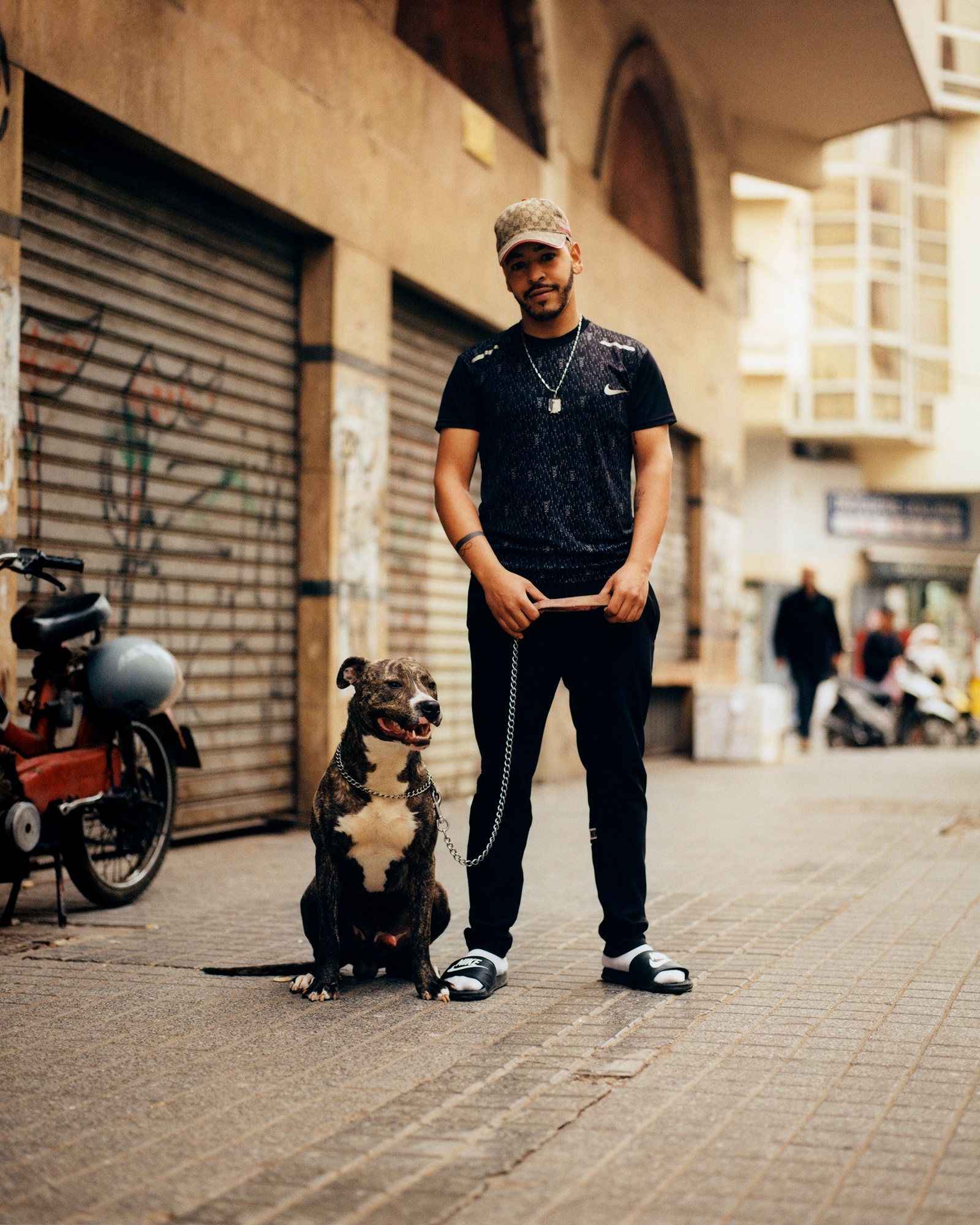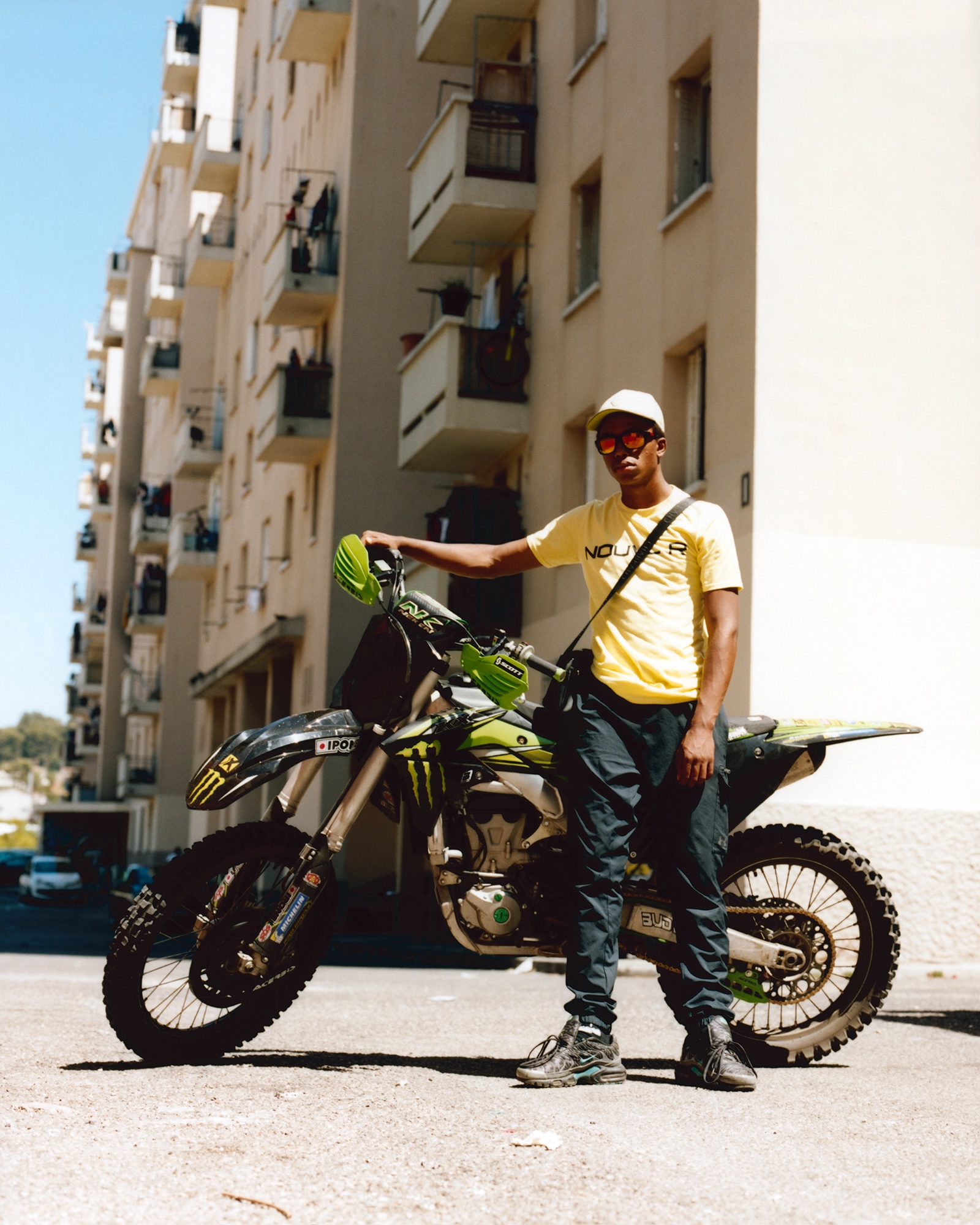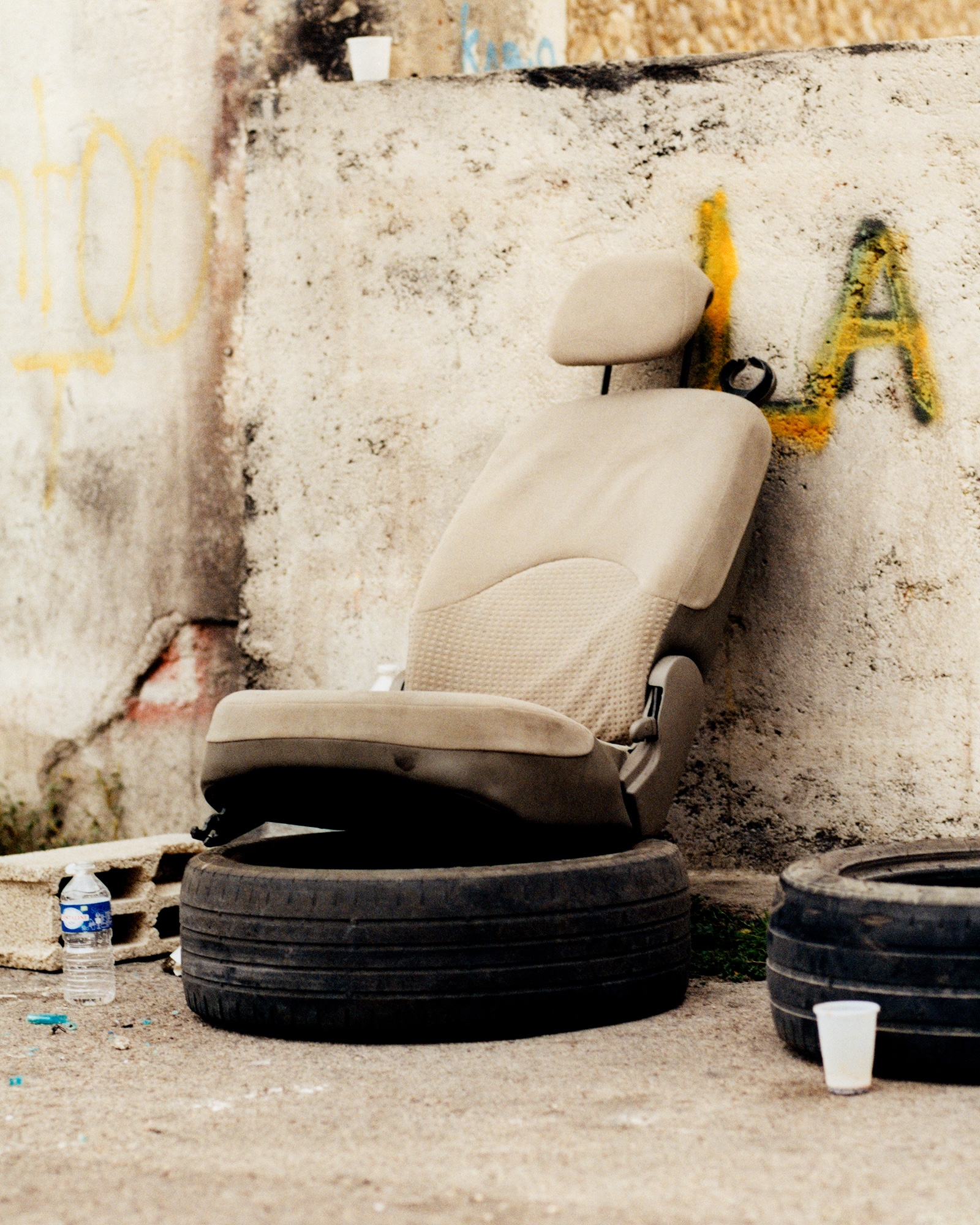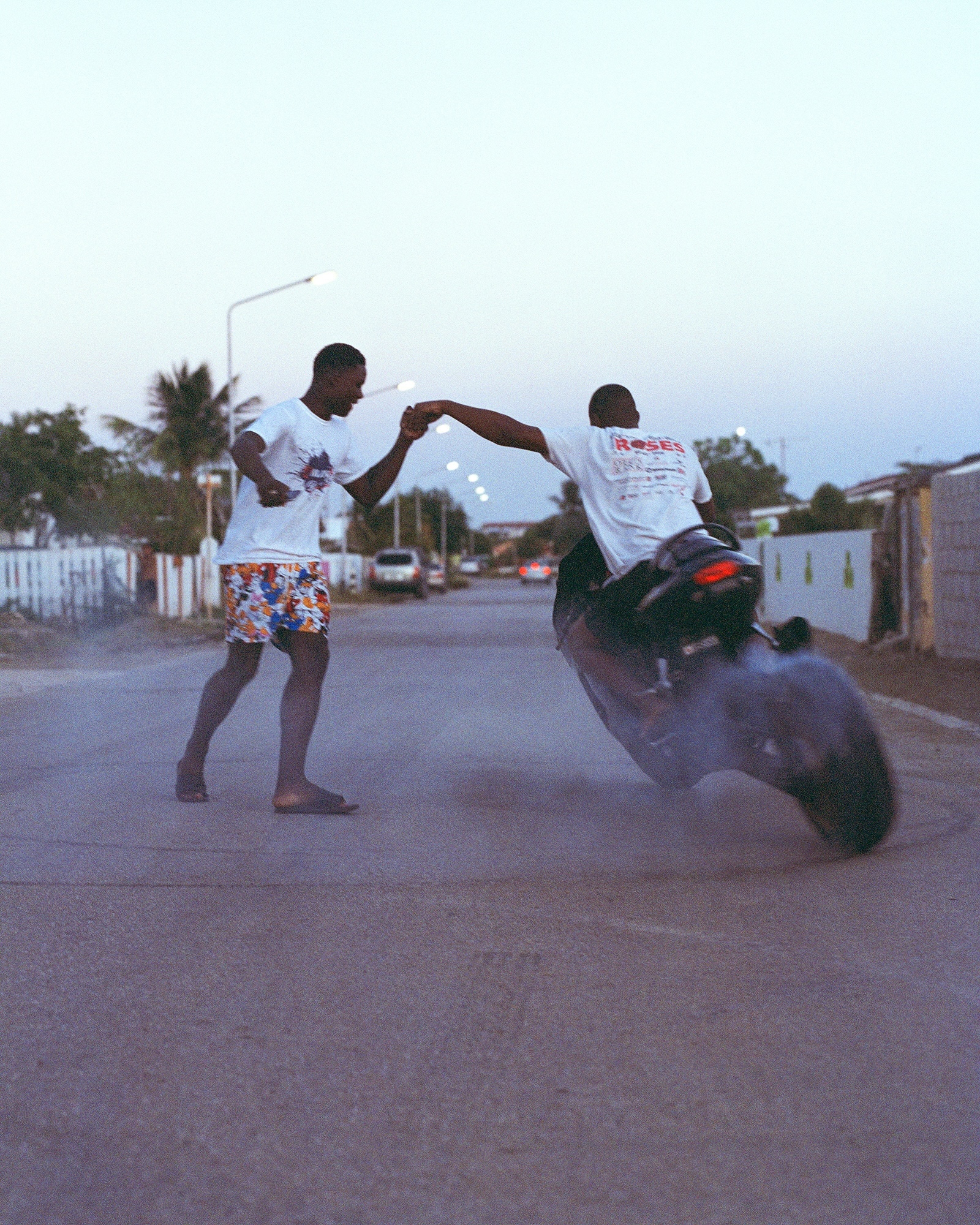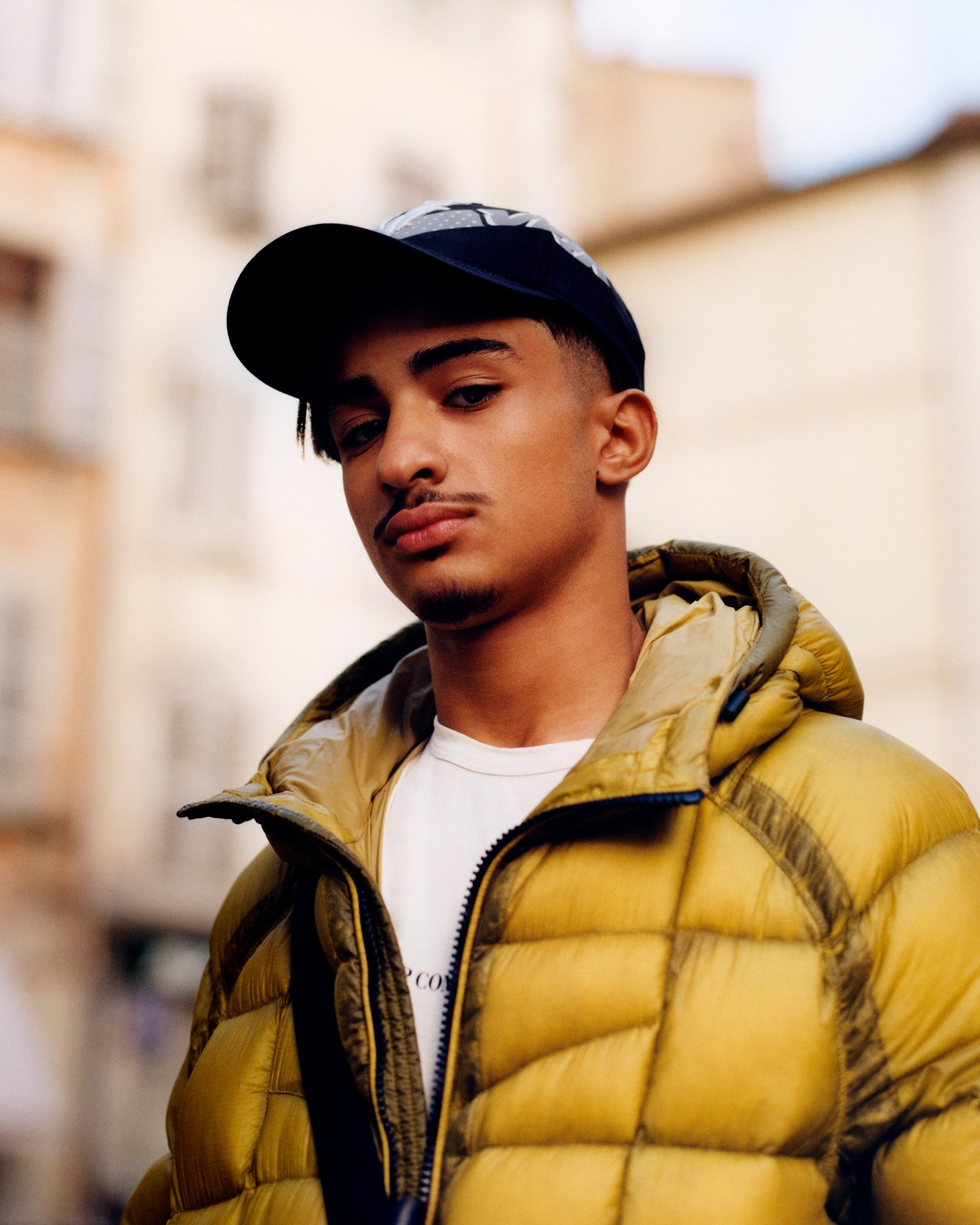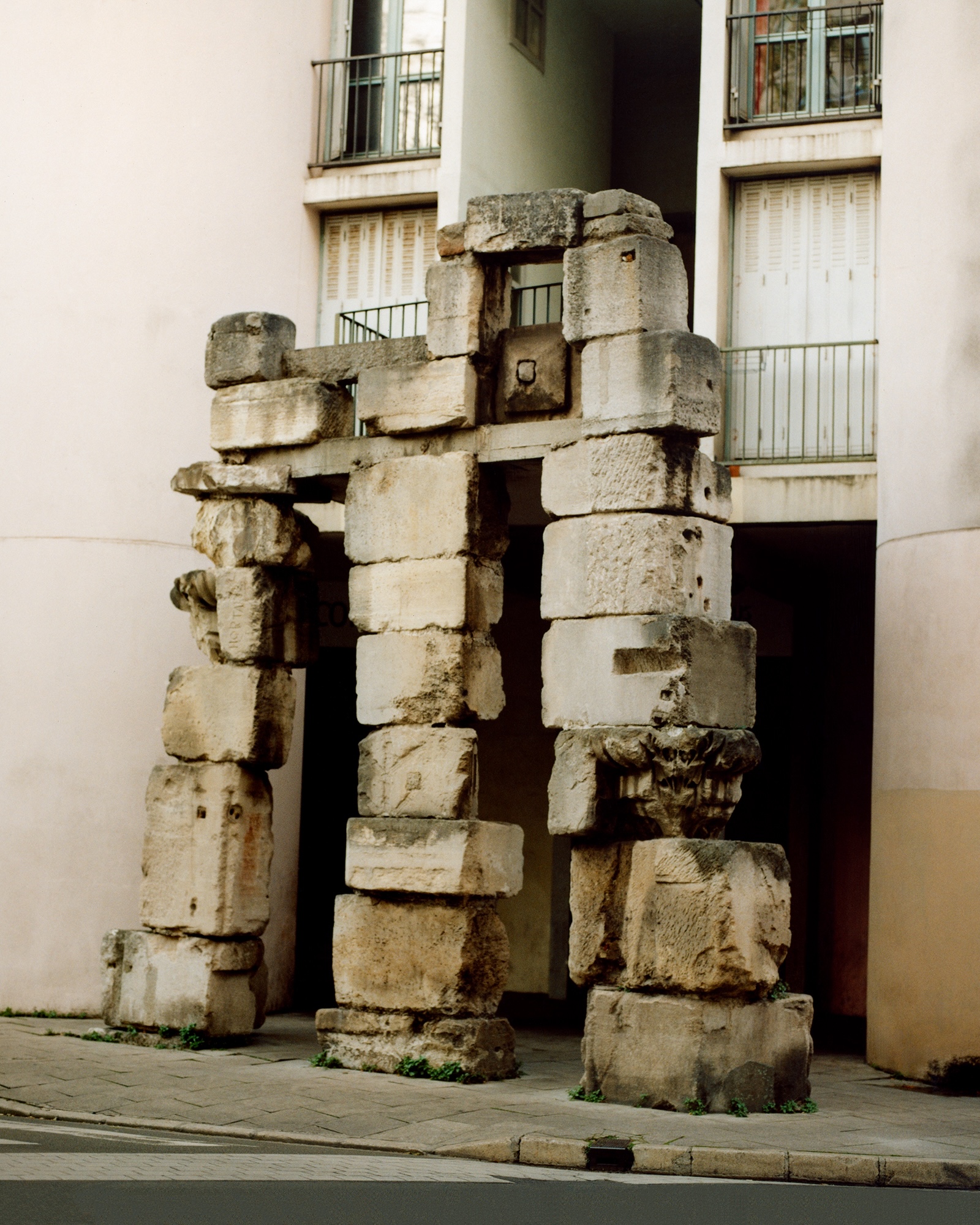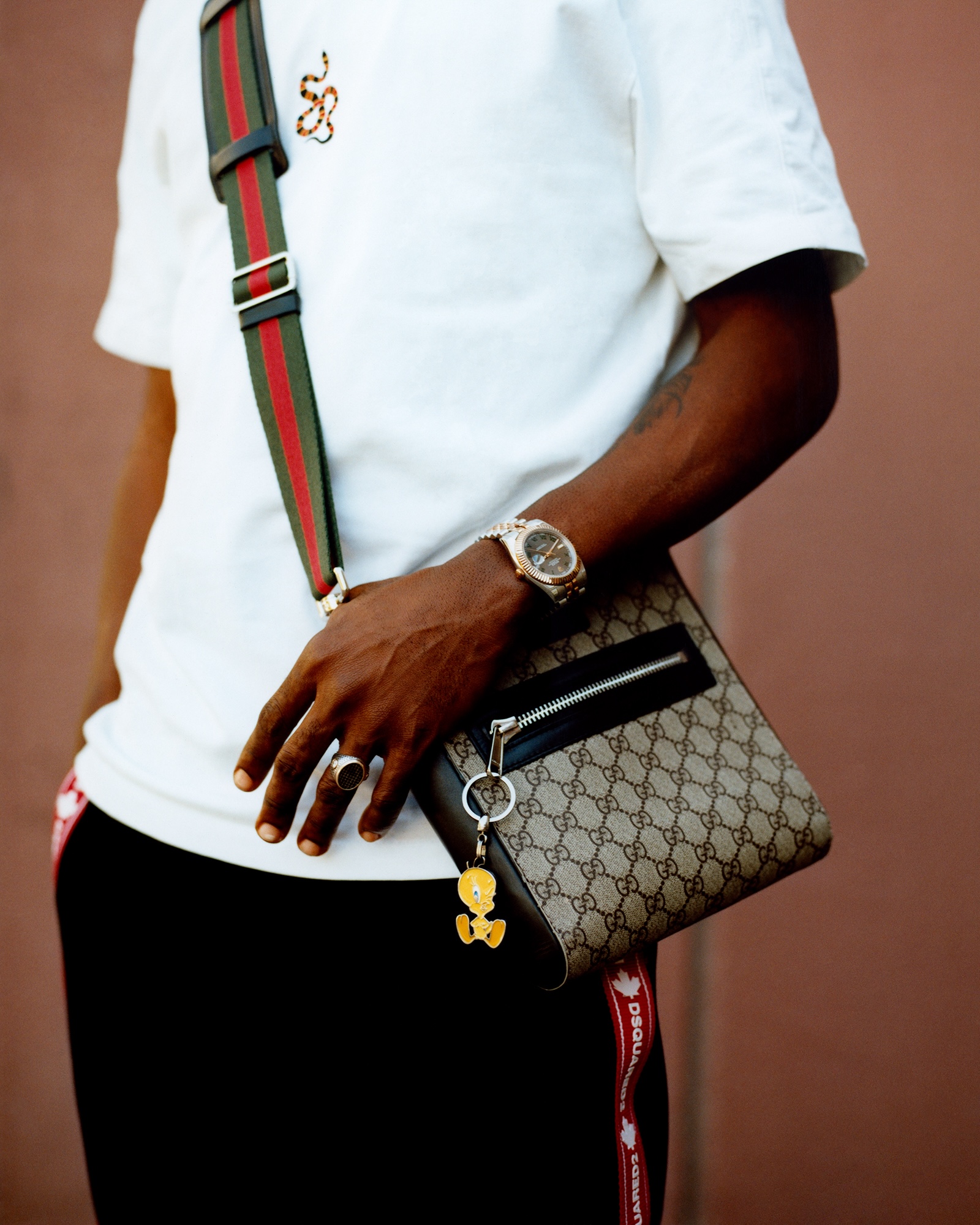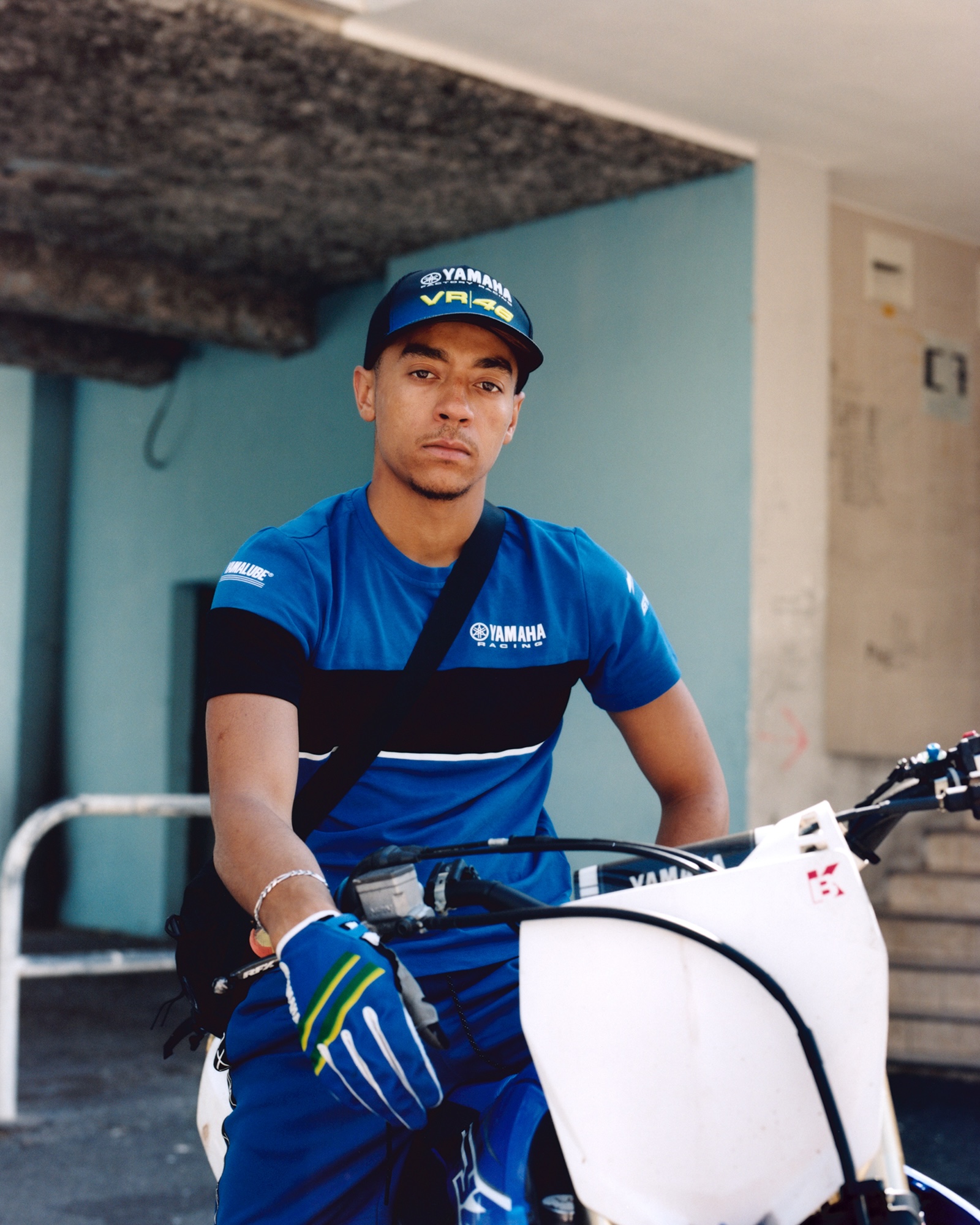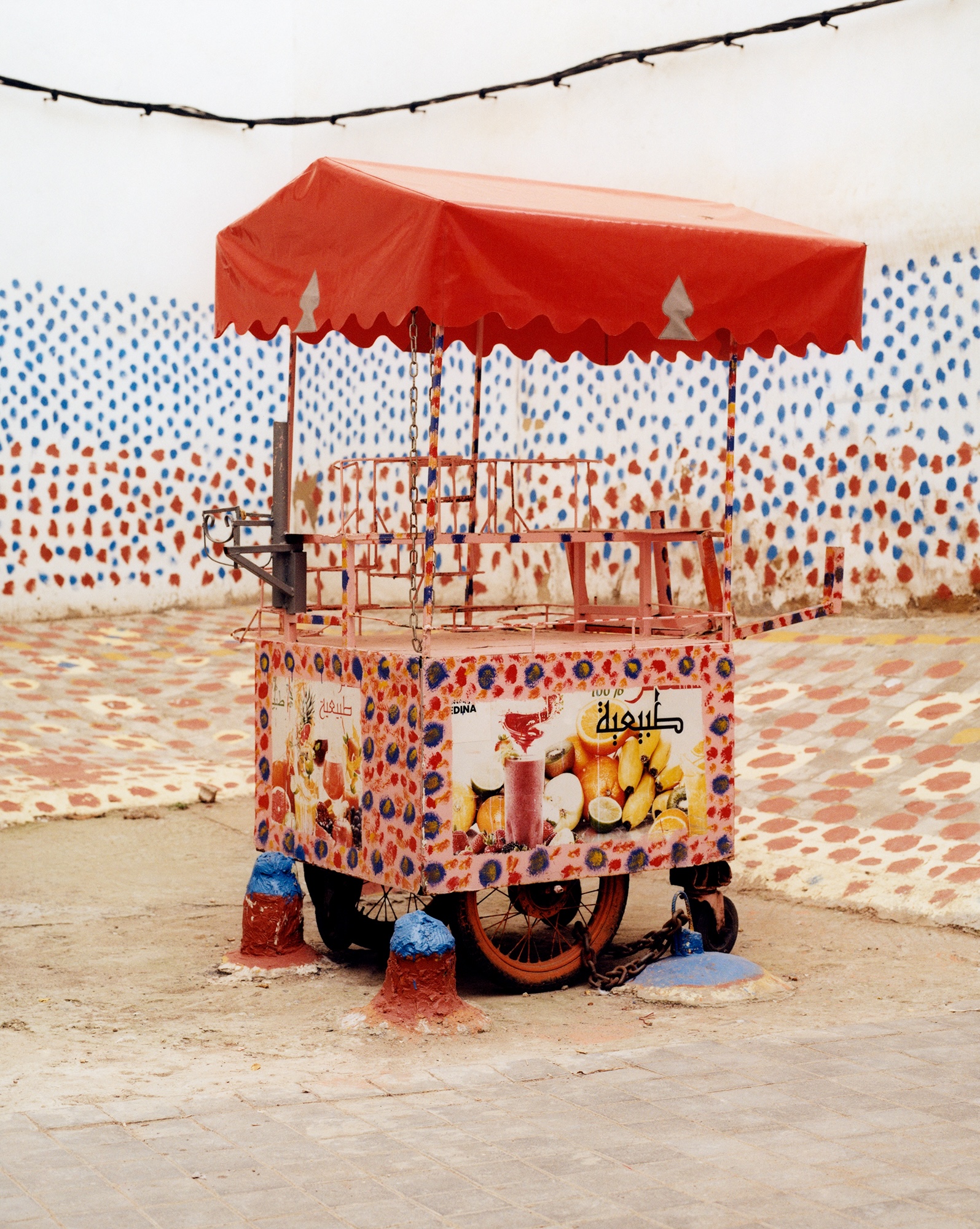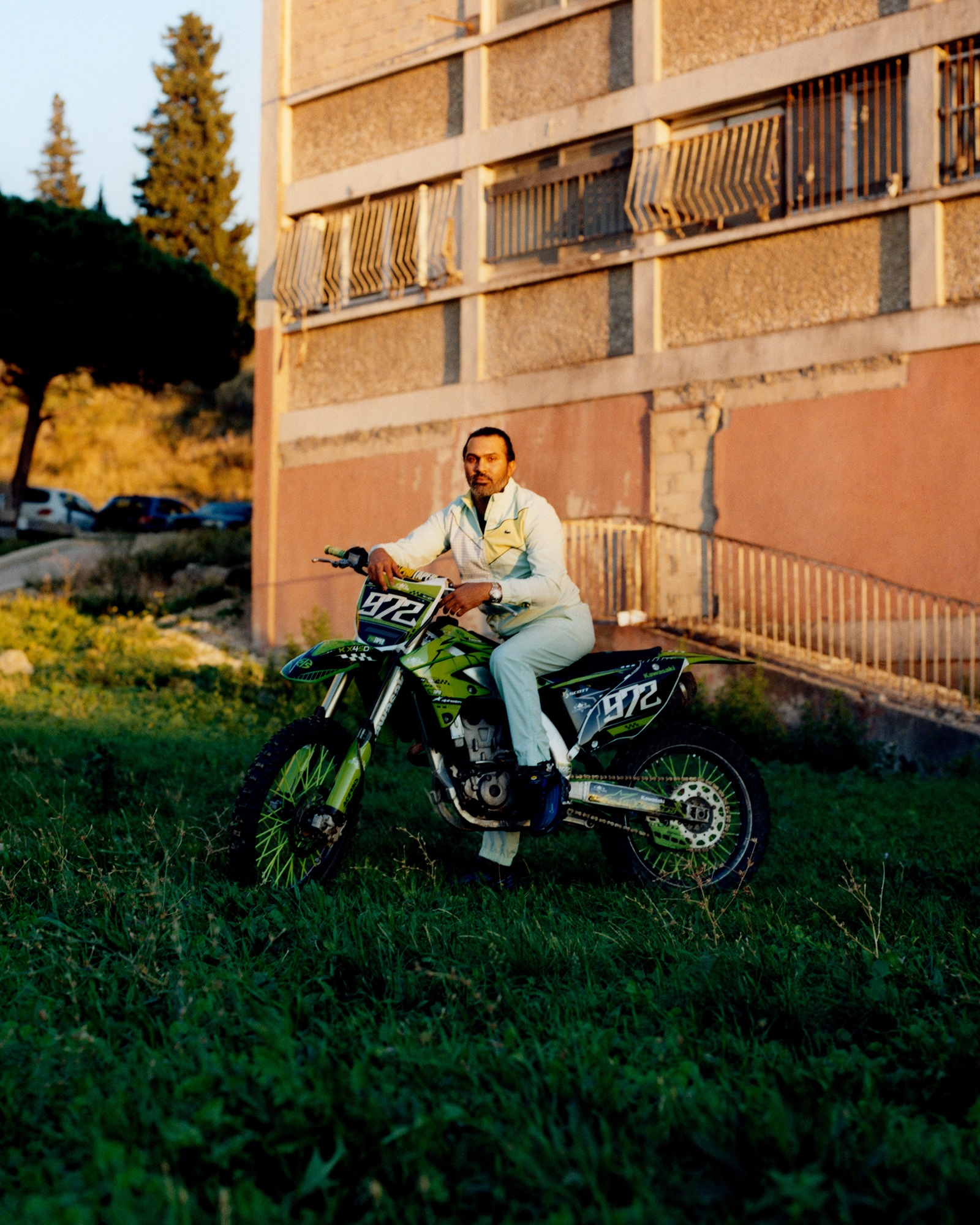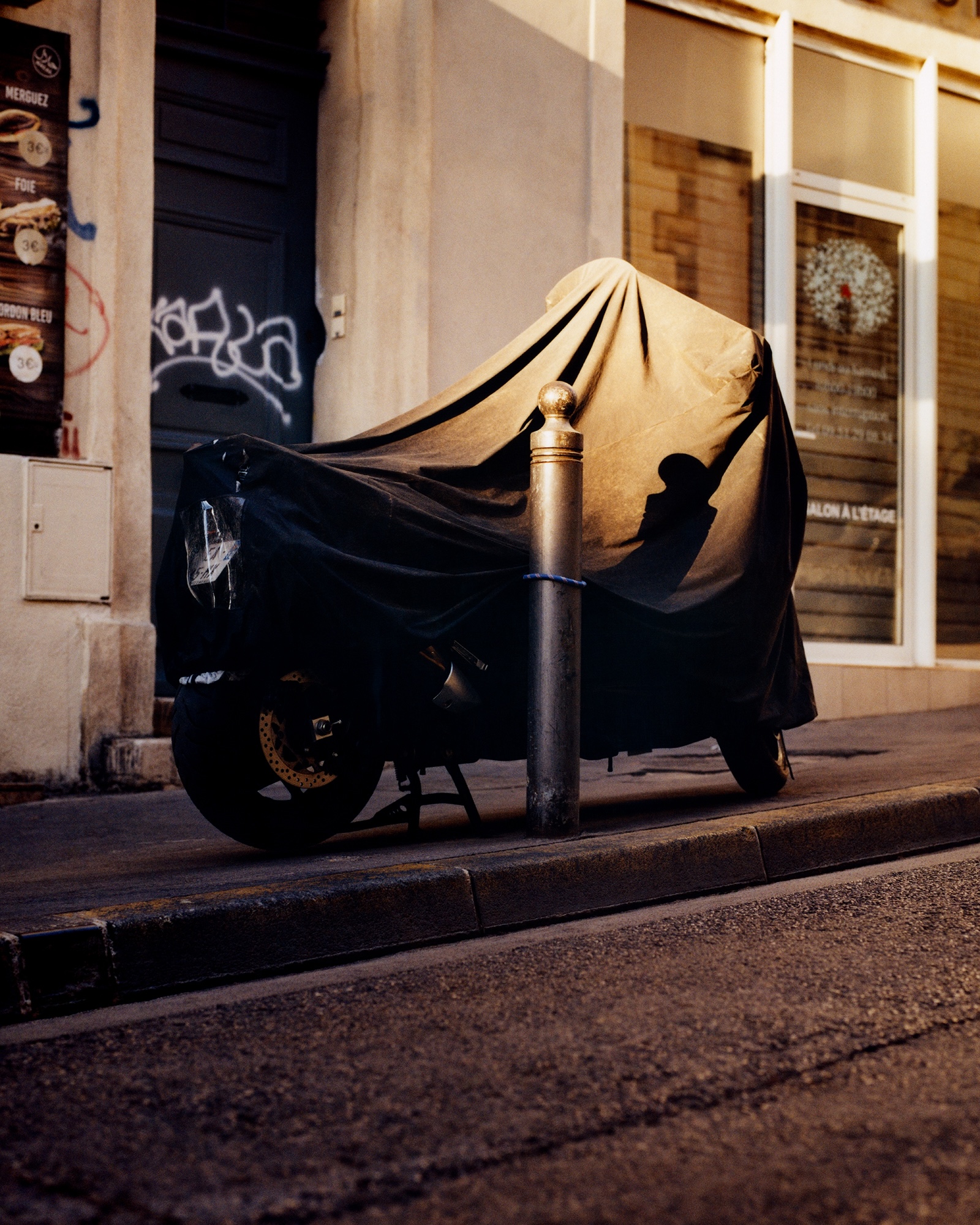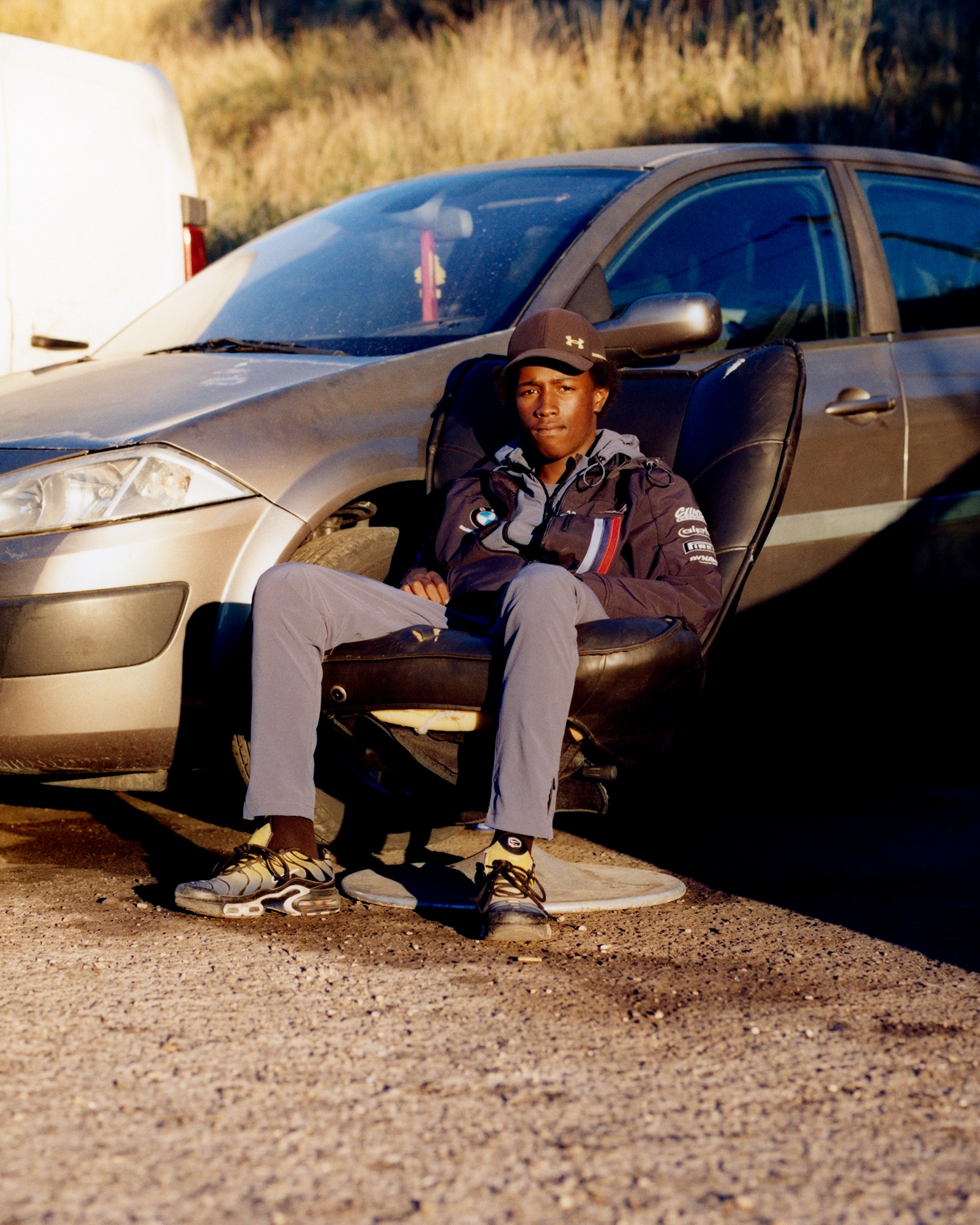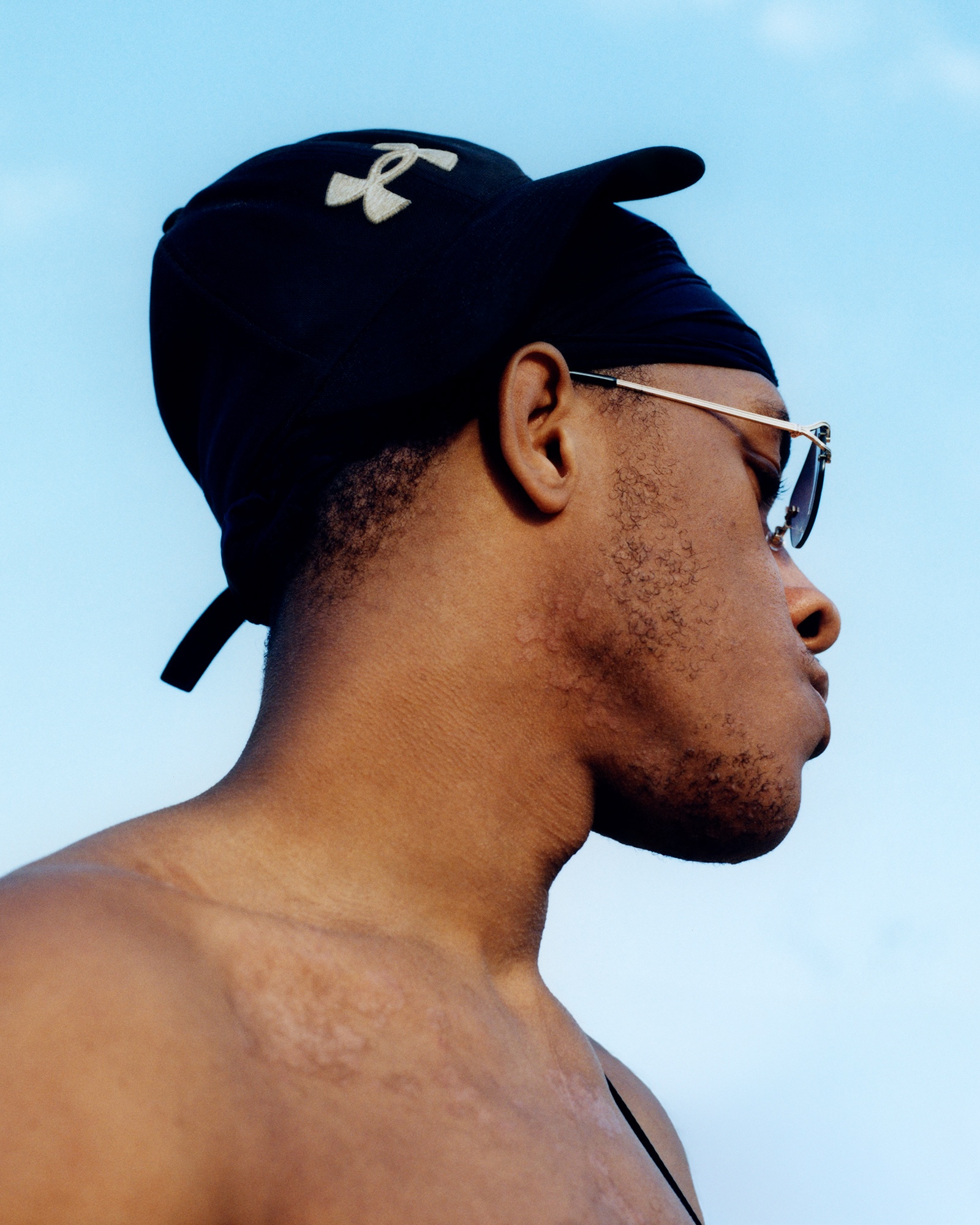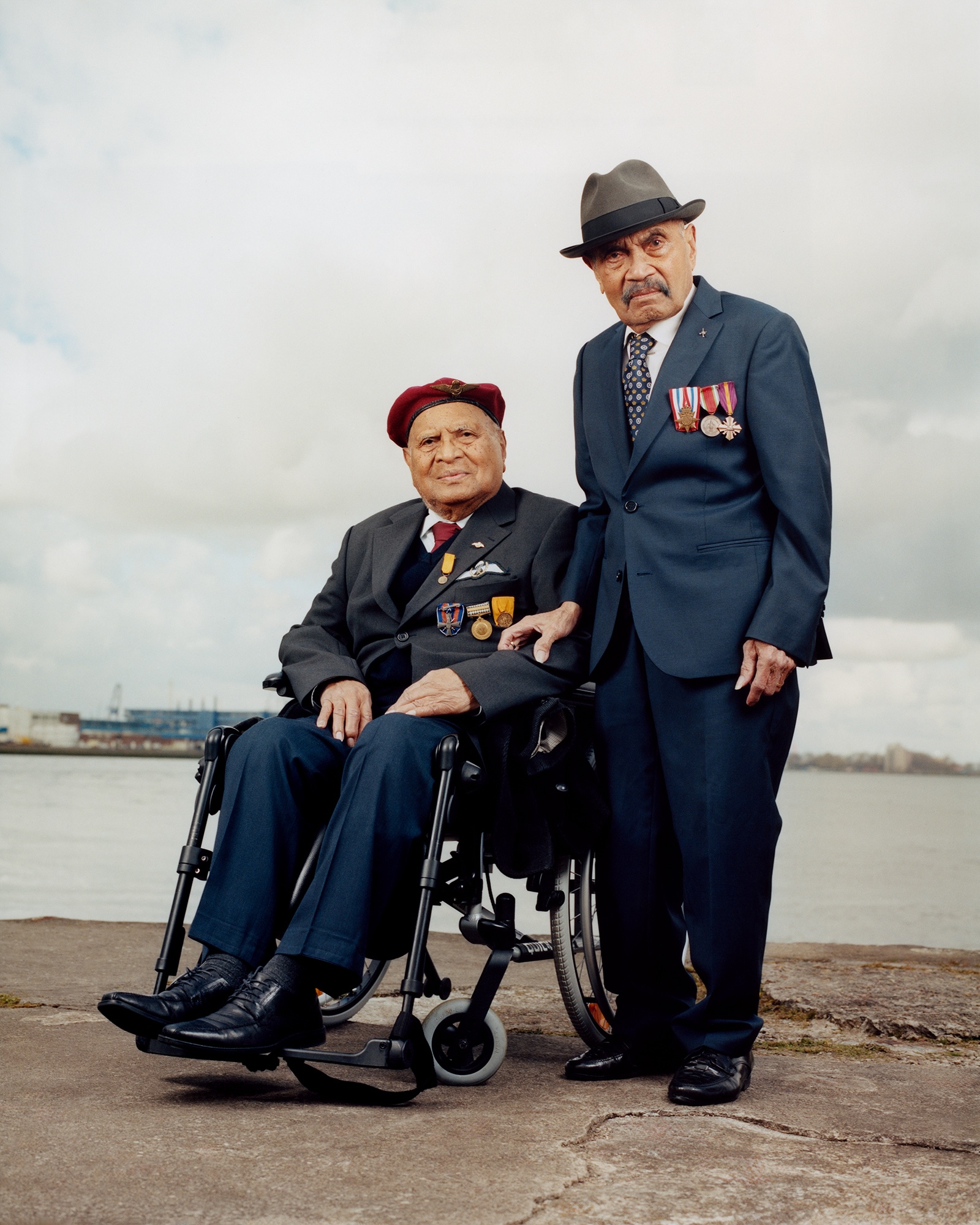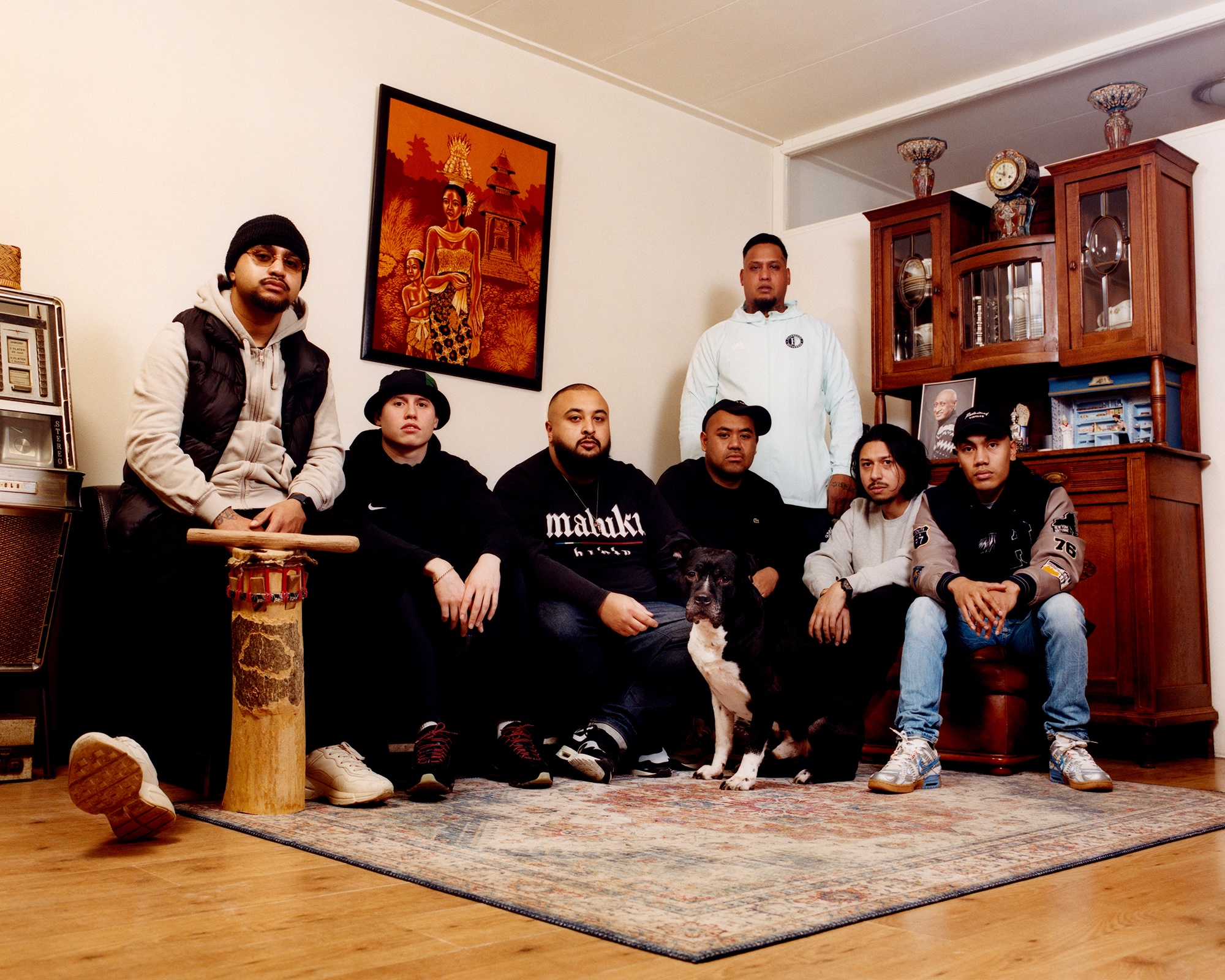All images © Elizar Veerman
The Dutch-born Moluccan artist is interested in how class creates solidarity among immigrant communities through tender images of young men in Europe
When I call Elizar Veerman, he’s at his father’s house in Maluku, an archipelago in the eastern part of Indonesia, far from where he grew up in the Netherlands. During the 17th century, The Dutch East India Company exerted significant control over Maluku with the aim of controlling the spice trade. Today, the result is a large diaspora in the Netherlands, a country which not only has a strong and flourishing immigrant population but also has less than welcoming policies towards migrants. As with any urban area, cities like Rotterdam have designated areas for migrants.
Born and raised in a small village near Rotterdam, in a “big Moluccan diaspora and immigrant community”, Veerman enjoyed taking street portraits heavily inspired by Bruce Davidson’s seminal photo book Subway. The reference is immediately evident in his work which is often intimate and textured. Though, Veerman tells me he began to feel he was quickly being boxed in as a ‘Moluccan photographer’.
“I was basically just imitating these [street] photographers, my work was quite naive in that sense. At a certain point I had quite a big street portfolio and I started to realise that I wasn’t really able to conceptualise my work,” Veerman tells me. “Aesthetically I was able to take a nice street portrait, but I couldn’t really put it in a broader context.”
After Veerman was accepted into the Royal Academy of Art in The Hague he started to study documentary photography under Rob Hornstra and began to tie his work together to form a larger tapestry: “I started to realise that these street portraits were actually part of a bigger diasporic story. It was quite autobiographical. I didn’t know that yet but I was doing it subconsciously.” During his time at the Academy, he developed two long-term projects, You Huddle to Keep Warm and Moluccan Legacies, the former focused on diasporic youth, mostly male, in cities like Marseille and Amsterdam, and the latter focused on Moluccan families in domestic spaces in the Netherlands.

Being Moluccan in diaspora is a two-fold effort in visibility and agency. Not only are these communities demoted to the ‘migrant class’ by wider Dutch society, but Maluku had to fight for its own independence back home where it was integrated into the Republic of Indonesia.
Moluccan Legacies is very much about remedying this imagistic legacy. The work presents Moluccan families at home in the Netherlands, in a portraiture tradition and purposefully filled with Moluccan identity symbols. In one image, three children pose in traditional dress, a sincere expression on their faces, backgrounded by a map of Maluku. It is a celebration of heritage but also of a shared struggle for independence in diaspora and on native soil. “I was always very frustrated about the way the Moluccan community was being portrayed in Dutch media,” continues Veerman. “The image language that was always being used by Dutch newspapers and Dutch media was always imagery of protests or of the train hijackings,” of Moluccans as “angry.”
The more I speak to Veerman, it becomes apparent he seems to be deeply self-aware of himself as a photographer and of his camera; of the fact that many immigrant communities are exploited for aesthetics without compensation, of the fact that entire trends have emerged capitalising on young men of colour in European cities without taking their wellbeing into account. He’s concerned with not reproducing the harmful image-making practices of his contemporaries. Veerman’s work does not separate identity politics from class politics. For him, it’s impossible to illustrate the immigrant experience without questioning the role class plays in the communities he photographs, and his role in it, too.
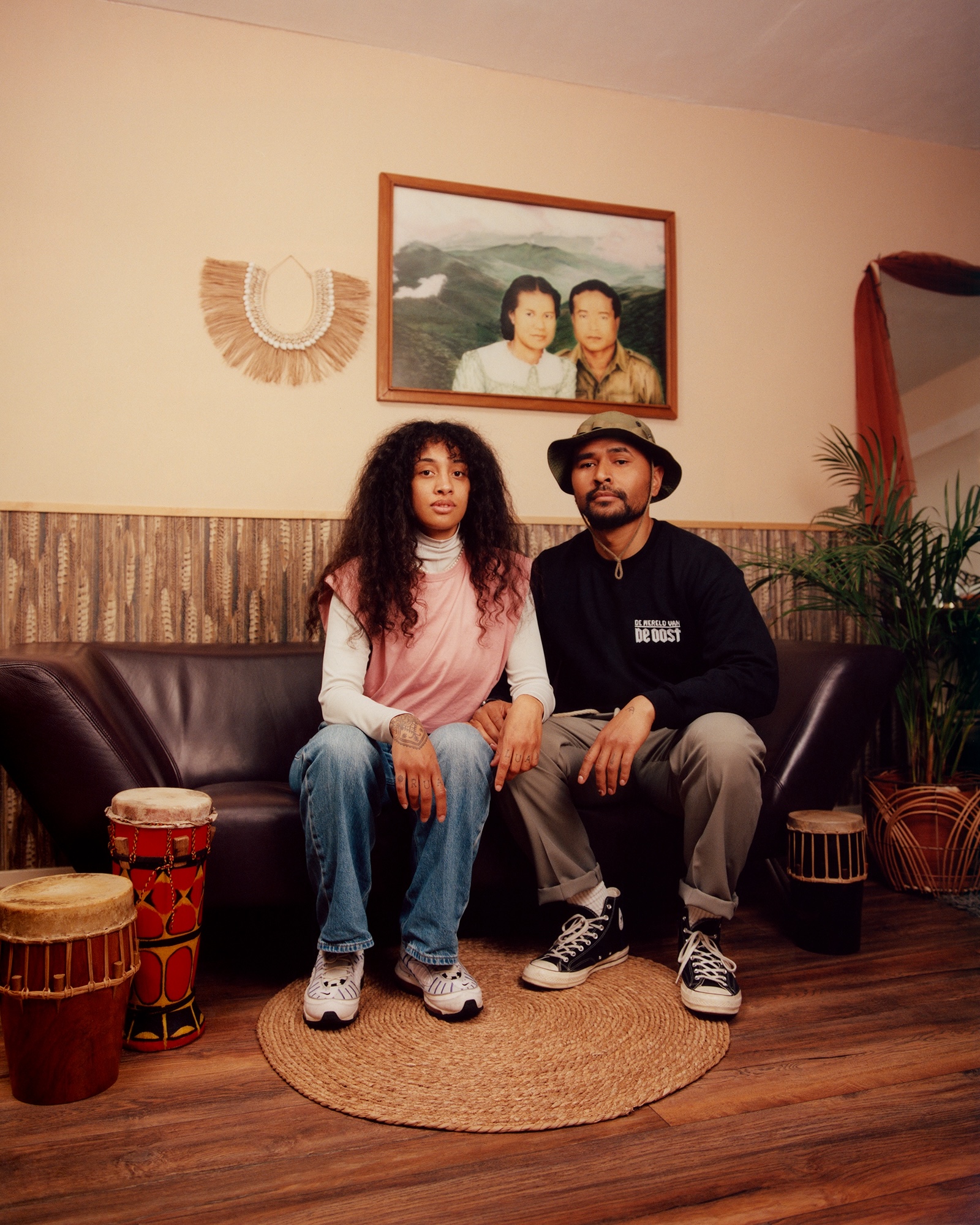
“I started to realise that these street portraits were actually part of a bigger diasporic story. It was quite autobiographical”
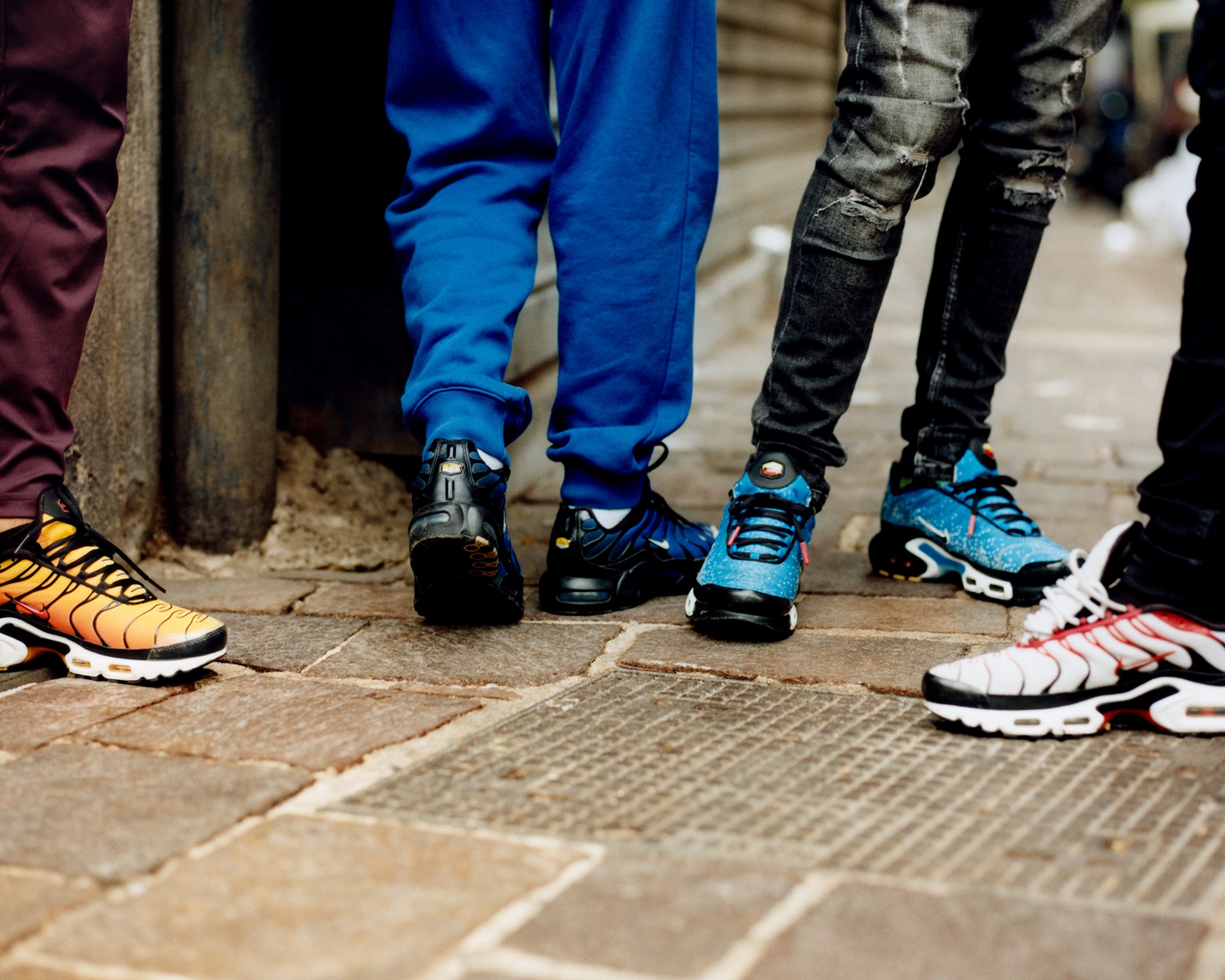
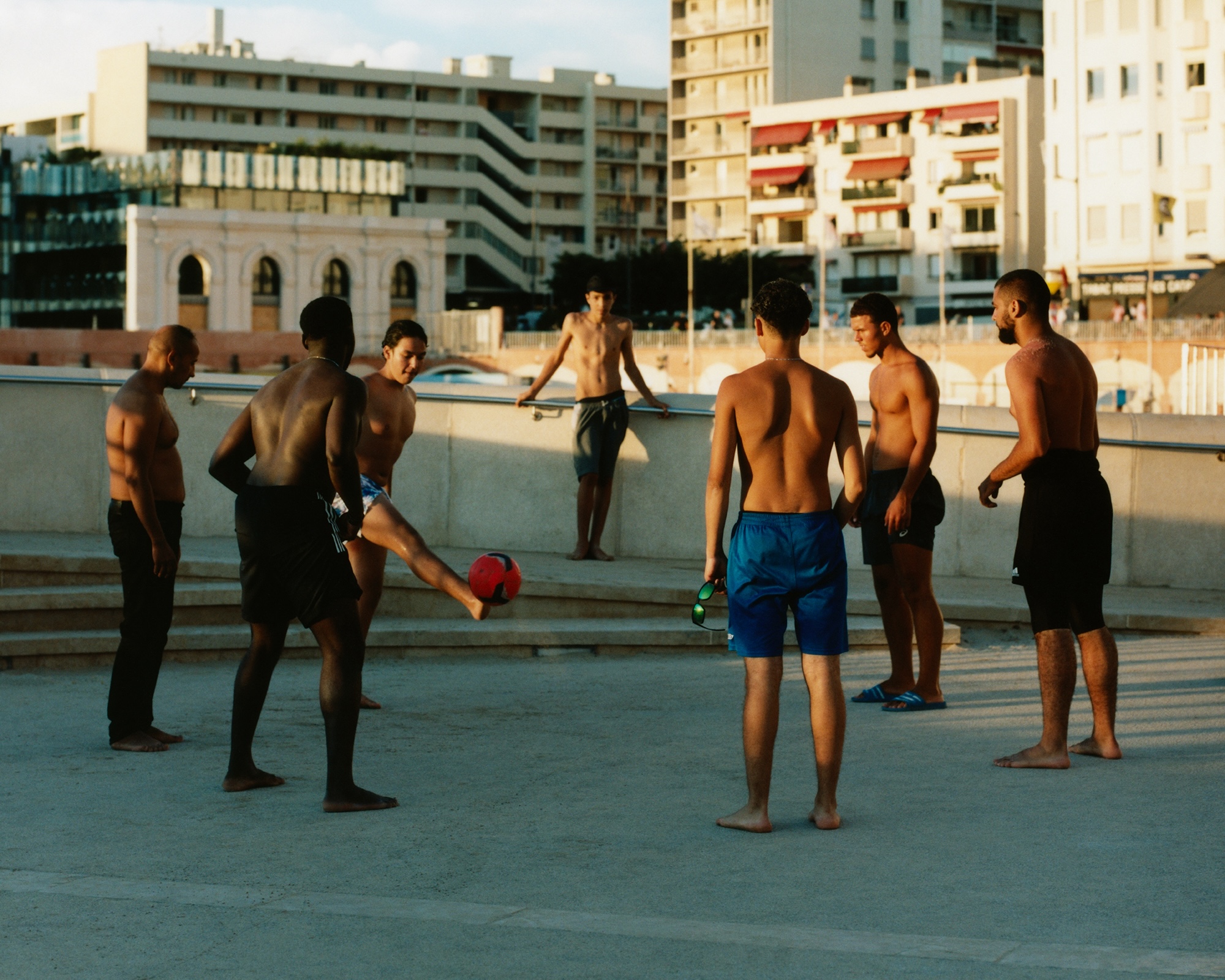
“My friends and family always say that I’m basically photographing myself indirectly – not in the literal sense that I’m taking self-portraits or that I’m literally looking aesthetically for someone who looks like me,” says the artist, “but definitely the interest for my work and the focus of my work starts with how I was brought up: as a man of colour in a white society with a postcolonial identity.”
Veerman grew up with the heavy influence of street culture, “chilling at the skate park. That’s also how I got into graffiti culture and all these subcultures that were around Rotterdam mostly occupied by these migrant youths.” He was raised alongside Caribbean, North African, and various other migrant youth; what connected them was not their shared heritage but their shared experiences of being young racialised men, stereotyped and vilified.
Thousands of Moluccans fought in the Royal Netherlands East Indies Army after the Dutch government promised that they would eventually get their own independent state, the Republic of South Maluku. After the Indonesian National Revolution, Moluccan soldiers and families were forced on a government command to The Netherlands by 12 ships in 1951 (Veerman’s family was on the first ship: Kota Inten), “the community was displaced against their will,” he says. Moluccans were told that their stay would be temporary, that with Dutch pressure, a Moluccan nation which they could return to would be established. This promise was never fulfilled.
“My friends and family always say that I’m basically photographing myself indirectly. The focus of my work starts with how I was brought up: as a man of colour in a white society with a postcolonial identity”
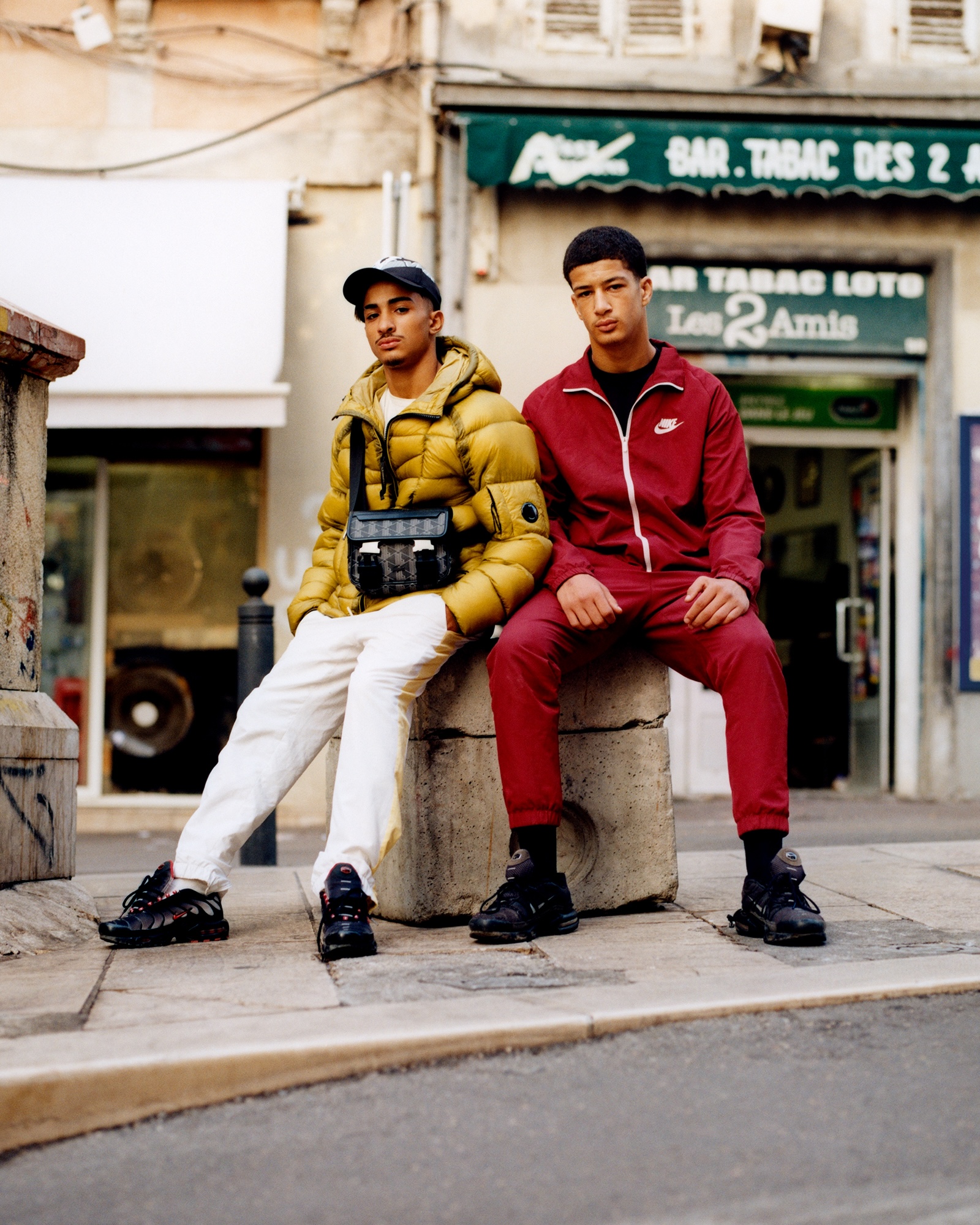
Veerman is interested in capturing this solidarity between racialised and demonised communities, “how these different cultures are indirectly intertwined with each other, how they are redeveloping themselves within public space and emerging within subcultures. I always thought that my work was purely about culture and more about these diasporic themes and about my community – which it is on the surface – but especially the last year I started to notice that my work is more and more about social class and that’s the culture.” A thinker like Martinique-born philosopher Édouard Glissant would call this the creolisation of diasporic communities that become alike by the very nature of how they are apart from one another in a dominant western society.
In You Huddle to Keep Warm, young black and brown men are positioned in masculine intimacies, asking us to consider the role of friendships and loyalties in communities where these young men are constantly fighting against social processes such as ghettoisation and segregation – but also everyday racism – in cities like Amsterdam and Marseille. Men touch hands whilst spinning on a motorbike creating a cloud of smoke, or two boys lean on each other in the warm sea water. These interactions are purposefully tender and oppositional to mainstream media’s obsession with classing immigrant youth as criminal, antisocial and troublesome.
In one scene, in the southeast of Amsterdam, a father poses with his baby daughter on a yellow motorbike – the scene is particularly warm not only due to the colours but owing to the comfortability of Veerman’s subjects. The father spotted Veerman photographing his yellow motorbike. He started screaming at Veerman in street slang, asking why Veerman was taking photographs of the bike. “You can only photograph it while I’m on it,” the father said before coming down with his daughter. The duality of this interaction, being both suspicious yet forthcoming, is echoed in the image of a strong masculine figure contrasting his small feminine daughter.
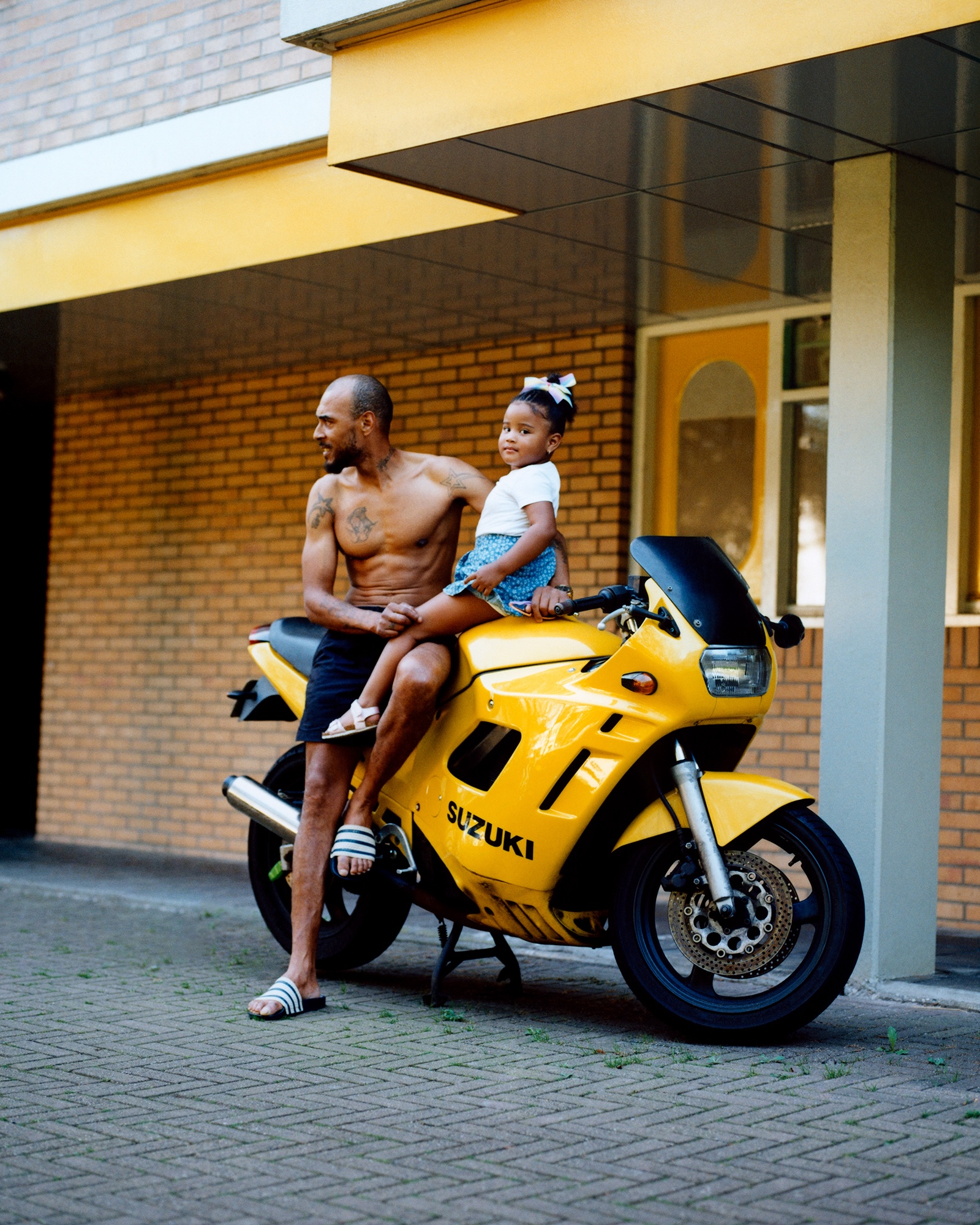
“Motorbikes a way for men to show themselves and almost celebrate themselves”
Motorbikes are a recurring theme in Veerman’s work, something he’s been reflecting on. In another scene in the Netherlands, a group of young men seem to accidentally match the colours of their bikes with their t-shirts as they perform tricks on the asphalt. At once, these bikes come to represent so much; youth, masculinity, urbanism, status and aesthetic. In Moluccan culture, “the motorbike is a very big thing,” says Veerman. “We have these motor clubs, the most famous one is called Satudarah which means ‘one blood’ in Moluccan-Malaysian. When I was younger I always used to go to these bike ride outs with my father which were happening in Moluccan neighbourhoods.”
The photographer found the same culture in Marseille, “guys driving on Yamaha bikes in working-class migrant communities. It’s also very practical and functional, especially in the south of Europe. But from a more sociological point of view,” continues Veerman, “I think it’s also a way for men to show themselves and almost celebrate themselves.”
Today, Veerman is shifting his gaze back to the homeland. After five years of shooting diaspora around Europe, he feels a desire to make more work his Moluccan identity. He’s currently working on a “very personal project” about his relationship with his father while “combining that with still lives of the village and of the land.
“I find it very interesting that he grew up in certain circumstances in the Netherlands after being in exile and now moved back to the land where he’s from,” says Veerman. “I find it a very beautiful metaphor.”

